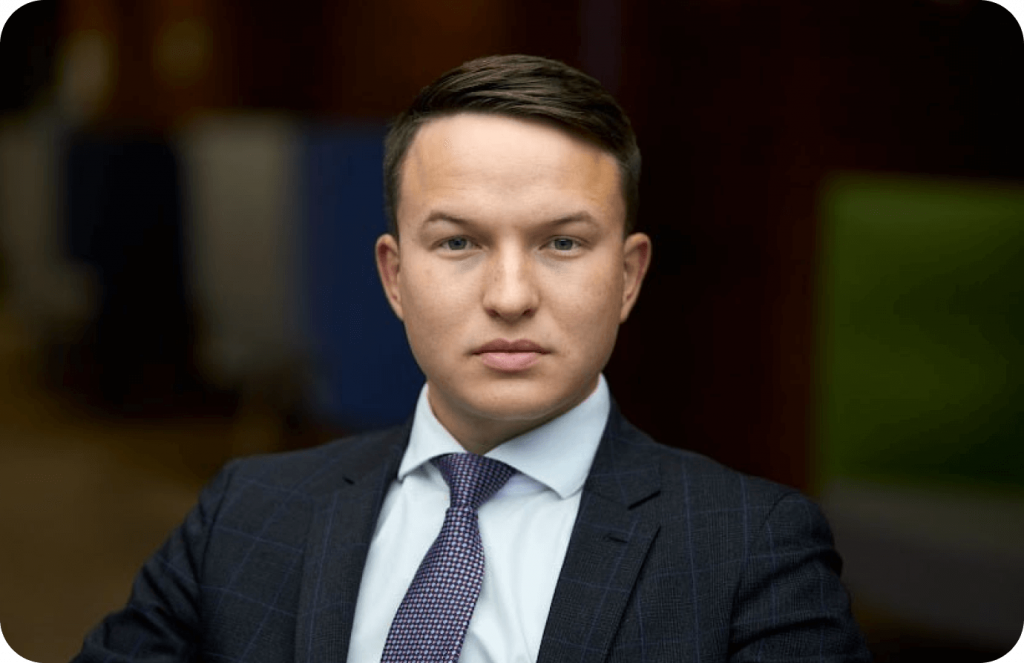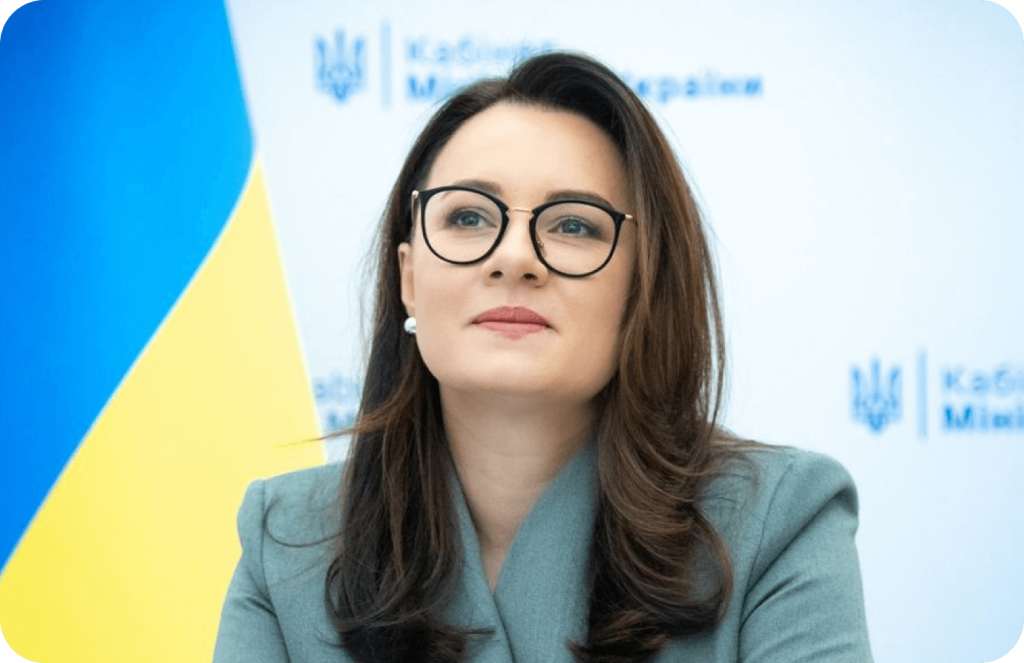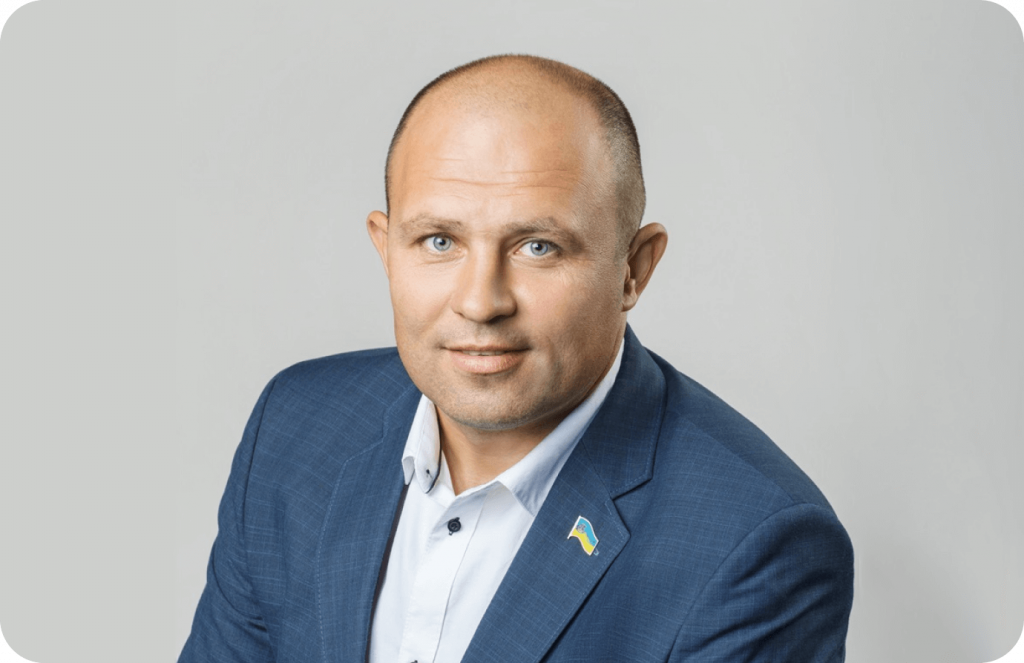Projects
ONLY 100 ENTERPRISES WILL REMAIN IN STATE OWNERSHIP
WHAT WILL HAPPEN TO THE OTHER THREE THOUSAND?
ONLY 100 ENTERPRISES WILL REMAIN IN STATE OWNERSHIP
WHAT WILL HAPPEN TO THE OTHER THREE THOUSAND?
ONLY 100 ENTERPRISES WILL
REMAIN IN STATE OWNERSHIP
WHAT WILL HAPPEN TO THE OTHER THREE THOUSAND?
Sponsored partnership project






Ukraine is developing an improved policy for managing state-owned enterprises. The reform aims to make the process of managing state and municipal property transparent and professional, as well as to reduce the share of state administration in the economy. The government’s plan is to reduce the number of state-owned enterprises by privatizing non-strategic ones and improving the management of strategic ones. To ensure effective management, the Ministry of Economy plans to keep 100 enterprises in state ownership. The government will transfer non-strategic enterprises to the State Property Fund of Ukraine (SPFU), which will put them up for privatization or liquidation.
“The Ministry of Economy is working on the State Ownership Policy. This is envisaged by the law ‘Introducing Amendments to Certain Laws of Ukraine on the Enhancement of Corporate Governance’. The State Ownership Policy is a strategic document that justifies why a particular enterprise remains in the public sector,” says Yulia Svyrydenko, First Vice Prime Minister and Minister of Economy of Ukraine.
Law No. 3587-IX, referred to by the minister, was adopted by the Ukrainian parliament on February 22, 2024. The president signed it on March 5. The improvements envisaged by the document can transform state-owned enterprises (SOEs) into those that can attract more investment and on more favorable terms. The changes will contribute to filling the state budget, but in general, the reform also affects the management of municipal enterprises (MEs), so territorial communities will also benefit. Currently, most SOEs and MEs are operating in the red. The payables of state-owned companies have doubled in six years (from 2018 to 2023), from UAH 449.9 billion ($16.7 billion) to UAH 912.8 billion ($24.8 billion). The reform is needed to reduce losses from the activities of municipal and state-owned enterprises.
WHAT IS THE ESSENCE OF THE REFORM?
Global experience shows that the state is not always an effective owner of enterprises – especially if there are thousands of them. Ukraine is no exception: according to the Ministry of Economy, only 475 out of 845 operating state-owned enterprises were profitable in the first three quarters of 2023. Moreover, the number of operating state-owned enterprises is constantly decreasing: from 1,640 in 2018 to 854 in 2023. Besides, state-owned enterprises consistently have about UAH 1 billion ($25.6 million) of overdue wage payments per year. It was the highest in 2020 at UAH 1.19 billion ($43.7 million).
How many state-owned enterprises are there in Ukraine now?
There are 3,116 state-owned enterprises in Ukraine, according to the Department of Ownership Policy of the Ministry of Economy, as of February 2024.
Those who bring money to the budget – 475 (15%)
Those who work – 854 (27%)
Those who don’t work – 1 736 (56%)
Those who don’t report – 526 (17%)
Number of state-owned enterprises
Number of enterprises in bankruptcy
Number of enterprises reorganized by the decision of the governing body
Number of enterprises undergoing liquidation
The number of non-operating enterprises has quadrupled since 2018: from 422 to 1,736.
Improving corporate governance at all state-owned companies is also part of the recommendations of the Organization for Economic Cooperation and Development (OECD), which brings together 37 of the world’s most economically developed countries and to which Ukraine has applied to join.
In addition, the reform of state property management is a step towards Ukraine’s full membership in the EU and towards receiving €50 billion ($54.1 billion) under the Ukraine Facility, and is on the list of required economic changes. Improving the governance system at state-owned companies is also on the list of structural beacons of the IMF’s Extended Fund Facility (EFF) program, under which Ukraine is to receive $15.6 billion over four years.
In a comment to LIGA.net, Oleksiy Movchan, MP and deputy chairman of the Verkhovna Rada Committee on Economic Development, explains that the law makes the standards of management of state-owned companies modern, not Soviet, i.e. market-based, not planned.
Prior to the signing of the law, the system of management of state-owned enterprises operated in such a way that the minister could dismiss or appoint the director of any enterprise, and influence it, its procurement, and internal policies. This was provided for by law.



OLEKSIY MOVCHAN
Member of Parliament and Deputy Chairman of the Parliamentary Committee on Economic Development
Nowadays, the management of state-owned enterprises will be most influenced by supervisory boards, most of whose members must be independent. These are people who are selected in a competition based on certain criteria.



OLEKSIY MOVCHAN
Member of Parliament and Deputy Chairman of the Parliamentary Committee on Economic Development
Prior to the signing of the law, the system of management of state-owned enterprises operated in such a way that the minister could dismiss or appoint the director of any enterprise, and influence it, its procurement, and internal policies. This was provided for by law. Nowadays, the management of state-owned enterprises will be most influenced by supervisory boards, most of whose members must be independent. These are people who are selected in a competition based on certain criteria.
WHICH ENTERPRISES WILL REMAIN IN STATE OWNERSHIP
The answer to this question will be contained in the State Ownership Policy, which is currently being devised by the Ministry of Economy. First of all, the state is considering the option of retaining the right to own assets that ensure energy independence, the development of the military-industrial complex and the space industry, and stability in the banking sector. This may also include control over critical natural monopolies or resources. It can also include specific services or those ensuring that citizens have access to opportunities outside of market conditions. For example, public broadcasting. Such is the early vision.


According to the reform plan, strategic state-owned enterprises will be reorganized into joint-stock companies or LLCs with the introduction of a corporate governance system. Management will be controlled by supervisory board members, and the board’s performance will be evaluated by the governing body. The purpose of these steps is to transform state-owned enterprises into efficient, competitive companies that are attractive to investors.
Strategic state-owned companies will implement high standards of corporate governance in accordance with OECD principles. The main ones are the transparent formation of governing bodies, activities, and reporting of state-owned companies. One of these bodies is an independent supervisory board.
The Ministry of Economy cites Ukrposhta, Ukrzaliznytsia, Naftogaz, Ukrenergo, and the GTS Operator of Ukraine as successful examples of this model.
HOW SUPERVISORY BOARDS WILL BE FORMED AT STATE-OWNED ENTERPRISES
Law No. 3587-IX improves the corporate governance framework in Ukraine. It expands the powers of the supervisory boards of strategic enterprises, but at the same time, increases their responsibility.
In a comment to LIGA.net, Yulia Svyrydenko explains how supervisory boards are formed, citing the example of Energoatom:
Independent members of the supervisory board are appointed through a competition. A recruiting company is chosen to select the members of the supervisory board. Its tasks include creating profiles and requirements for candidates for the supervisory board, selecting candidates, and preparing a list of candidates.



YULIA SVYRYDENKO
First Vice Prime Minister and Minister of Economy of Ukraine
The requirements for candidates are approved by the Committee for the Appointment of Executives of Enterprises of Particular Economic Importance, which includes representatives of government agencies and international organizations: EBRD, the International Finance Corporation (IFC) in Ukraine, the EU Delegation to Ukraine, and the Business Ombudsperson’s Office.



YULIA SVYRYDENKO
First Vice Prime Minister and Minister of Economy of Ukraine
Independent members of the supervisory board are appointed through a competition. A recruiting company is chosen to select the members of the supervisory board. Its tasks include creating profiles and requirements for candidates for the supervisory board, selecting candidates, and preparing a list of candidates. The requirements for candidates are approved by the Committee for the Appointment of Executives of Enterprises of Particular Economic Importance, which includes representatives of government agencies and international organizations: EBRD, the International Finance Corporation (IFC) in Ukraine, the EU Delegation to Ukraine, and the Business Ombudsperson’s Office.
An important novelty of the law is that it clearly defines the conditions and procedures under which the powers of supervisory board members may be terminated early. This decision will be made by the management body of the state-owned enterprise or the general meeting of shareholders.
HOW THE SPFU DETERMINES THE FATE OF AN ENTERPRISE AND WHAT IS TRIAGE
Over the past two years, more than 1,200 enterprises have been transferred to the State Property Fund of Ukraine (SPFU). Among the important tasks is determining the future fate of each enterprise. Currently, the Fund is conducting an in-depth triage of these companies, which will allow them to individually classify the enterprises into one of three “baskets”: privatization, liquidation (bankruptcy), or management.
It often happens that companies are transferred to the Fund without financial statements and even without the possibility of contacting the company’s management. The only thing we have in such cases is a transfer and acceptance certificate and an extract from the state register.



VITALIY KOVAL
Head of the SPFU
Of course, it is impossible to make effective management decisions on the basis of this information, it is impossible to understand whether such an enterprise should remain in state ownership, whether it has a chance to be privatized, etc. That is why we have developed and approved a special mechanism for triage. This is a sorting of state-owned enterprises into categories. Initially, the term was used in medicine to categorize patients according to the severity of their condition in order to prioritize care. Now it is used in a broader sense.



VITALIY KOVAL
Head of the SPFU
It often happens that companies are transferred to the Fund without financial statements and even without the possibility of contacting the company’s management. The only thing we have in such cases is a transfer and acceptance certificate and an extract from the state register. Of course, it is impossible to make effective management decisions on the basis of this information, it is impossible to understand whether such an enterprise should remain in state ownership, whether it has a chance to be privatized, etc. That is why we have developed and approved a special mechanism for triage. This is a sorting of state-owned enterprises into categories. Initially, the term was used in medicine to categorize patients according to the severity of their condition in order to prioritize care. Now it is used in a broader sense.
WHAT IS TRIAGE OF STATE-OWNED COMPANIES AND HOW IS IT DONE?
TRIAGE is the process of sorting state-owned enterprises into categories based on their condition and value. The main criterion is the net worth of the enterprise (the estimated value of property less accounts payable).
1,200 ENTERPRISES (ABOUT 20,000 REAL ESTATE ASSETS)
The enterprise is not subject to privatization
Subject to privatization; has a positive net worth and / or stable / growing profitability
Operates at a loss or does not operate at all, has a negative net worth
Not subject to triage (temporarily or not at all)
What’s next ↓
Reasons ↓
Remains in state ownership
Privatization
Liquidation or bankruptcy
– Registered in the temporarily occupied territories.
– The decision to privatize has already been made.
– The SPFU has a minority stake (less than 50%).
WHAT IS TRIAGE OF STATE-OWNED COMPANIES AND HOW IS IT DONE?
TRIAGE is the process of sorting state-owned enterprises into categories based on their condition and value. The main criterion is the net worth of the enterprise (the estimated value of property less accounts payable).
1,200 ENTERPRISES (ABOUT 20,000 REAL ESTATE ASSETS)
The enterprise is not subject to privatization
What’s next ↓
Remains in state ownership
Subject to privatization; has a positive net worth and / or stable / growing profitability
What’s next ↓
Privatization
Operates at a loss or does not operate at all, has a negative net worth
What’s next ↓
Liquidation or bankruptcy
Not subject to triage (temporarily or not at all)
Reasons ↓
– Registered in the temporarily occupied territories.
– The decision to privatize has already been made.
– The SPFU has a minority stake (less than 50%).
Currently, the SPFU is triaging about 1,200 state-owned enterprises. Most of them have already been analyzed, and the triage is expected to be completed by mid-2024. This will allow systematizing state assets that have not been accounted for and controlled for decades. The triage will also help to quickly determine the fate of state assets and manage them effectively.
The Fund collects information on the financial condition of the enterprise, property and intellectual property rights, accounts payable, and the existence of arrests or restrictions on privatization. Based on the information collected, the estimated value of the company’s assets is determined. The Fund compares this value with accounts payable and obtains the estimated net value of the enterprise.
“When we have all the figures, a working group meeting will be held. It will determine whether it makes sense to privatize the entity or whether it is to be liquidated,” says Vitaliy Koval.
How state-owned enterprises are sold
The SPFU and local governments sell state-owned and municipal enterprises through small and large-scale privatization. The list of small-scale privatization assets is approved by the SPFU, and the list of large-scale privatization assets is approved by the Cabinet of Ministers upon the proposal of the SPFU. The list of municipal property assets for privatization is approved by the local council.
The list of enterprises for privatization is published on the website of the SPFU or local authorities – this information is public. All online auctions are held in the state electronic trading system Prozorro.Sale. If the book value of an asset is up to UAH 250 million ($6.4 million), it is subject to small-scale privatization. If it is higher, it is subject to large-scale privatization.
How state-owned enterprises are liquidated
To terminate the existence of state-owned enterprises, they go through a liquidation or bankruptcy procedure. To do this, the assets and liabilities of the enterprise are analyzed. If the assets can offset the liabilities, the company is liquidated: the assets are sold, and the proceeds are used to pay off debts.
If the assets cannot offset the liabilities, the company goes through bankruptcy proceedings, after which it is also liquidated. In both cases, all property is sold through the Prozorro.Sale system.
In parallel with the triage, a list of key companies in certain sectors of the economy (defense, energy, transportation, etc.) with a certain amount of capital, assets or income, taxes paid, etc. is being compiled. Such companies will be reviewed not by the working group, but by the asset management unit. It will continue to take care of these enterprises and determine whether they should remain in state ownership.
HOW TERRITORIAL COMMUNITIES MANAGE AND DISPOSE OF MUNICIPAL PROPERTY
There are currently about 14,000 municipal enterprises in Ukraine. Most of them are unprofitable. More than 1,400 MEs have gone bankrupt in Ukraine over the past 10 years. The largest number of bankruptcies was recorded in 2021 at 378 enterprises.
Top cities of Ukraine by the number of insolvent MEs
The top cities in Ukraine by the number of insolvent MEs are Dnipro, Kherson, Kharkiv, and Lviv. Only 20% of enterprises were able to sustain their operations without external financing.
Lviv
Kharkiv
Dnipro
Kherson
Municipalities sell their assets through privatization or lease of property using the state electronic system Prozorro.Sale. Since the beginning of the full-scale war, local budgets have received more than UAH 2 billion ($51.4 million), which demonstrates the willingness of businesses to invest in the economy and develop. Municipalities use this money according to their needs, in particular, to restore transport and social infrastructure.
According to Oleksandr Korinnyi, mayor of Novoukrainka (Kirovohrad Oblast) and head of the All-Ukrainian Association of Amalgamated Territorial Communities, the process of disposing of municipal property depends on local self-government, community needs, the condition of the property, and economic circumstances. Analyzing the value and income from the property helps communities determine whether the sale or lease will be profitable.
The law gives local governments the authority to dispose of municipal property. These decisions are usually made at sessions of city councils on the proposal of executive bodies, but an important factor is to take into account the needs of the local community.



OLEKSANDR KORINNYI
Mayor of Novoukrainka and Head of the All-Ukrainian Association of Amalgamated Territorial Communities
For example, if the community has an urgent need for new kindergartens or sports complexes, this may be a reason to keep certain property for communal needs instead of selling or leasing it. Before making a decision to sell or lease a property, its technical condition is assessed. If the costs of maintenance and repair significantly exceed the possible income from its use, the property may be put up for sale or lease. Cost-effectiveness is a key factor.



OLEKSANDR KORINNYI
Mayor of Novoukrainka and Head of the All-Ukrainian Association of Amalgamated Territorial Communities
The law gives local governments the authority to dispose of municipal property. These decisions are usually made at sessions of city councils on the proposal of executive bodies, but an important factor is to take into account the needs of the local community. For example, if the community has an urgent need for new kindergartens or sports complexes, this may be a reason to keep certain property for communal needs instead of selling or leasing it. Before making a decision to sell or lease a property, its technical condition is assessed. If the costs of maintenance and repair significantly exceed the possible income from its use, the property may be put up for sale or lease. Cost-effectiveness is a key factor.
For example, the Pyriatyn community in Poltava Oblast started with a detailed assessment of all property to determine its condition, current use, and potential. They developed an action plan that included projects to modernize infrastructure, improve utilities, and attract investment. One of the successful projects noted by the Association was the conversion of an empty building into a business incubator to support local entrepreneurs. According to the chairman, the All-Ukrainian Association of ATCs sees an urgent need to develop management strategies, implement best practices and transparent management processes, and strengthen cooperation with the public.


The government must adopt the necessary regulatory bylaws for the property management reform within six months of the law’s entry into force. The development of a plan for further implementation of the reform is scheduled for the next three years.
With the adoption of the law on improving corporate governance of state-owned companies, work on changes has only just begun.
This project was created thanks to the support of the American and British people through the United States Agency for International Development (USAID) and the United Kingdom’s Foreign, Commonwealth & Development Office (UKaid). The views of the authors expressed in these publications do not necessarily reflect the views of USAID, the U.S. Government, UKaid, or the UK Government.
Sponsored partnership project






Projects is proudly powered by WordPress